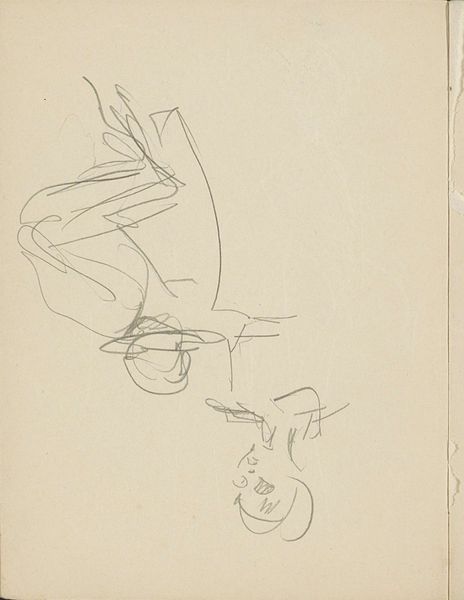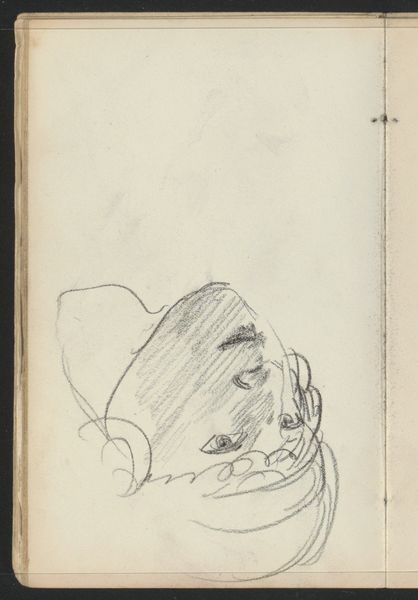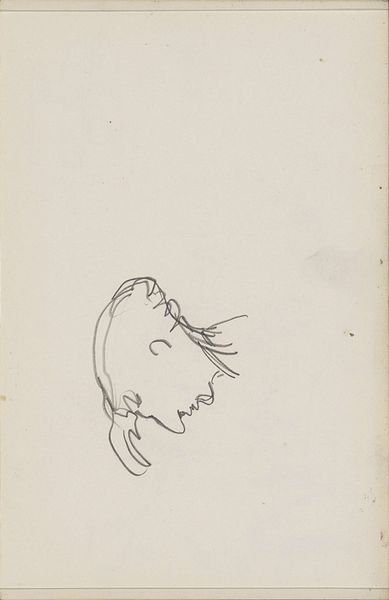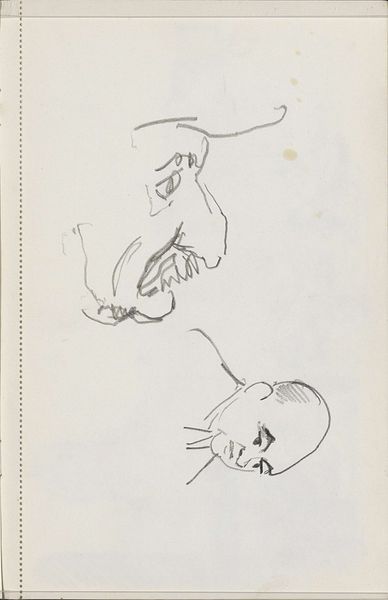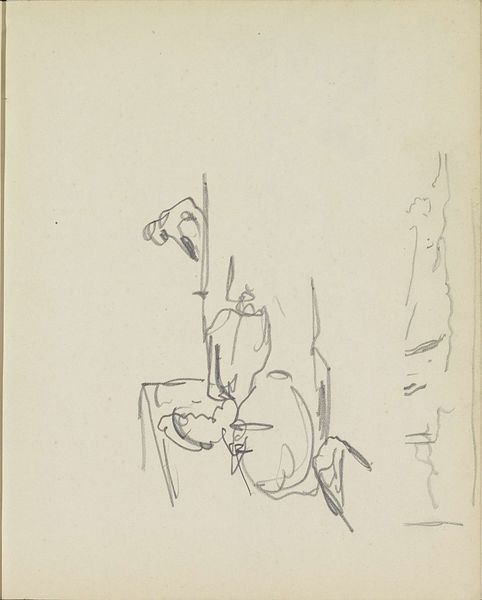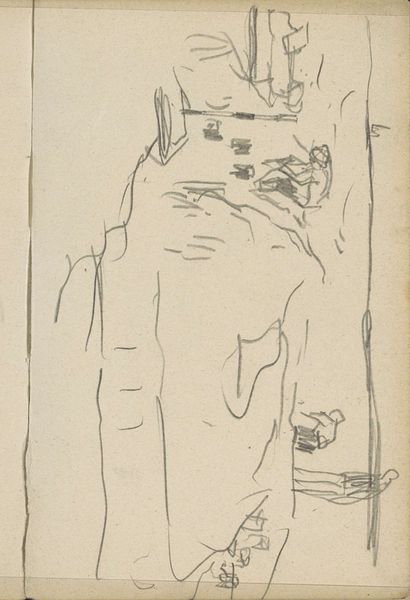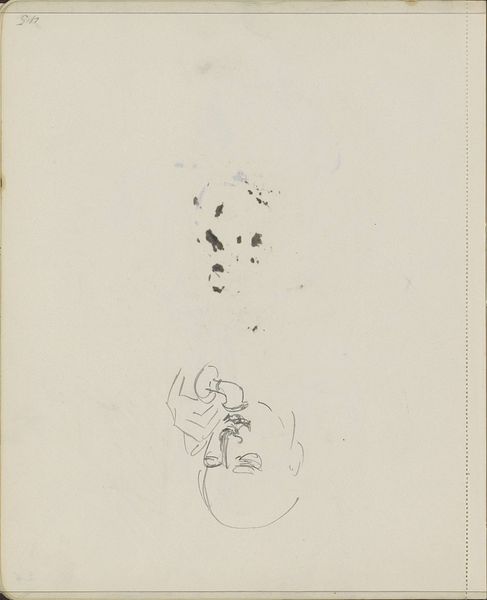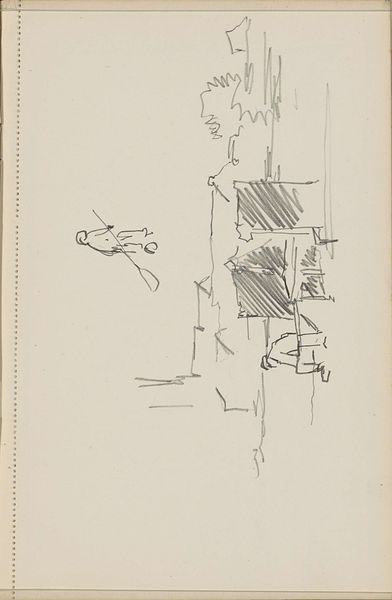
drawing, pencil
#
portrait
#
drawing
#
light pencil work
#
quirky sketch
#
pen sketch
#
pencil sketch
#
personal sketchbook
#
idea generation sketch
#
ink drawing experimentation
#
pen-ink sketch
#
pencil
#
line
#
sketchbook drawing
#
sketchbook art
Copyright: Rijks Museum: Open Domain
Editor: So, this is Cornelis Vreedenburgh's "Portret van een peutermeisje en een stoomboot" from somewhere between 1890 and 1946. It's a pencil drawing held at the Rijksmuseum. The sketchiness gives it a dreamlike quality. What do you see in it? Curator: Dreams are often fragments, aren't they? Snapshots that don't quite connect logically, and you have to love that steamship stuck at the top! It is as if a child is turning something familiar—her face—upside down, and playing it off a new object. Do you feel that disconnect too? Editor: I do, it's charming actually. What does it tell us about the artist? Curator: Perhaps Vreedenburgh was simply capturing a fleeting moment, trying to hold onto the ephemeral thoughts of childhood. There's a vulnerability to sketches like these; they're honest glimpses into an artist's creative process and inner thoughts, or is it the inner world of his subject? It invites curiosity, and allows one to fill in the blanks. The sketch itself could almost be a Rorschach test! Editor: That's interesting. So the incompleteness is deliberate in a way, inviting the viewer into a collaboration with the artist. Curator: Precisely! And it suggests a deeper connection to the subject matter and the way a specific world is translated by an observer to a 2D medium. It makes me wonder about the relationship he had with his model... was there perhaps a steamboat ride promised later that day? Editor: I like the idea that the steamboat image could represent a potential adventure, but left up in the air in a world of possibility! This has helped me think differently about how simple lines can still contain many hidden messages. Curator: Indeed! It also reminds us that sometimes the most profound art lies in its rawest and most unpretentious form.
Comments
No comments
Be the first to comment and join the conversation on the ultimate creative platform.
